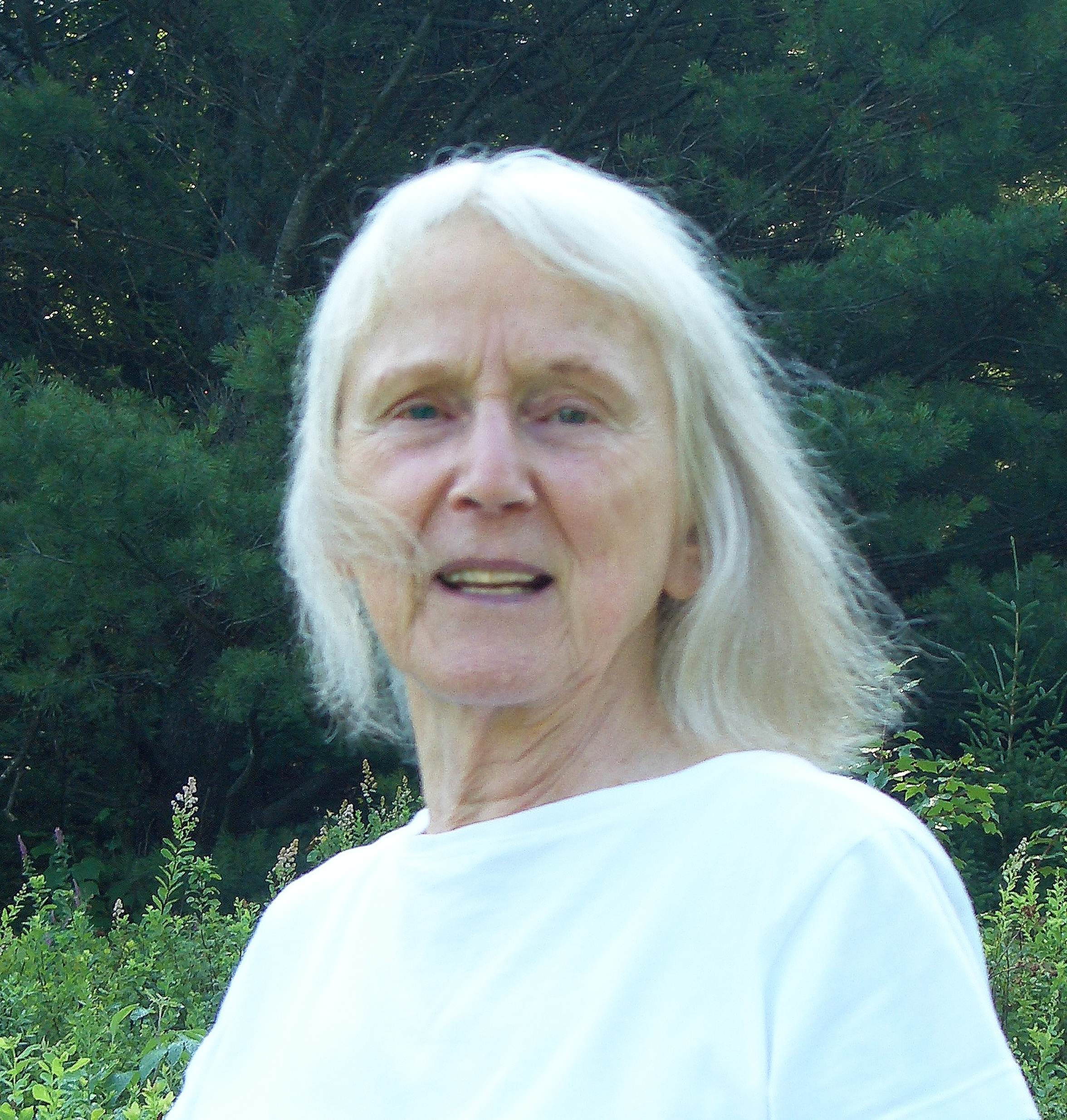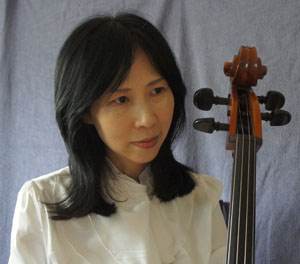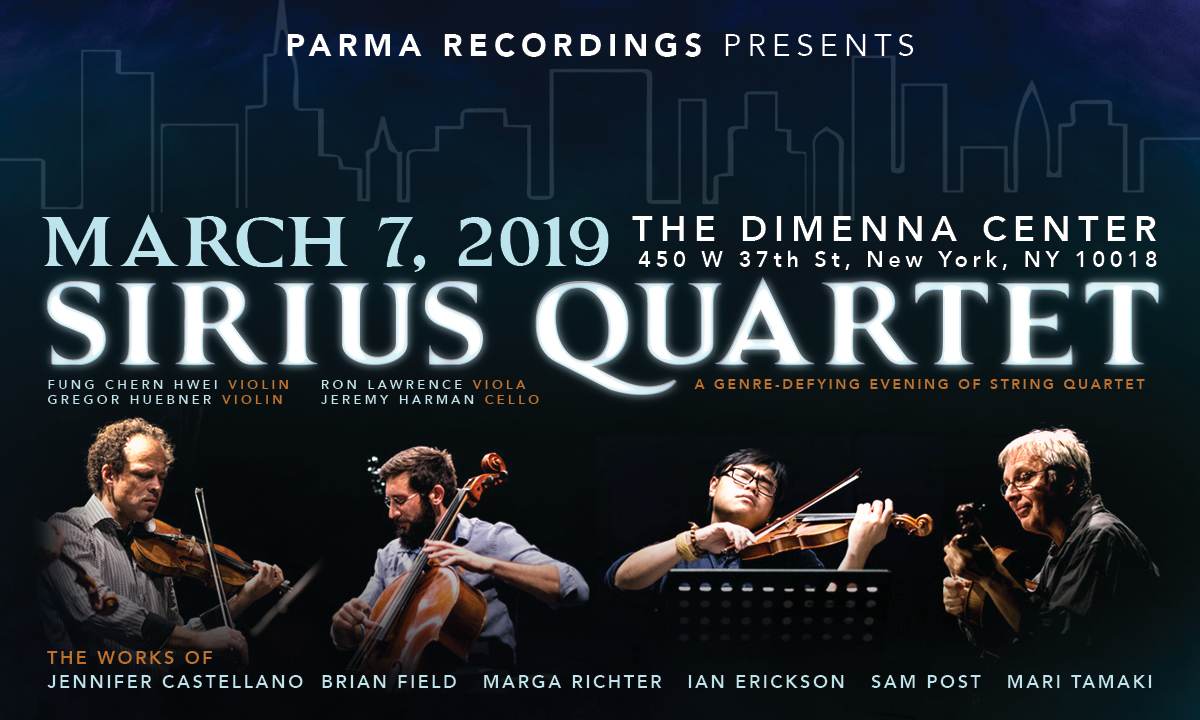With just a couple days remaining before our performance at The DiMenna Center for the Performing Arts with Sirius Quartet and six contemporary composers, we are excited to offer a sneak-peek of the artists and their work. Coming from diverse backgrounds and offering unique pieces that function cohesively together, these artists’ works were chosen for performance and recording through a recent PARMA Call for Scores. Read on to learn a little more about them, their pieces, and what March 7 at The DiMenna Center will entail…
Tickets for the March 7 performance are still available: purchase them here.

Ian Erickson
öðlo
Ian Erickson is a composer and performer from Southwest Missouri. He graduated from Missouri State University with two Bachelor of Arts degrees in music performance and composition, and has extensive experience in improvisation. Many of his works aim to explore polyphonic textures through the use of complex rhythms and dense harmonies. Currently, Ian is actively composing new works, working as a freelance performer, and accompanying dance performance classes at Missouri State University.
In addition to studying composition, Ian also attended the Port Townsend School of Woodworking. His studies at Port Townsend focused on traditional hand tools and joinery. Using those skills, Ian has engineered and built traditional and custom instruments utilizing acoustic materials for use in his own works.
Liner note excerpt: öðlo originated from two chords and a love of dissonance, both rhythmic and harmonic. This piece is an installment in a five movement work— ‘an interchangeable collection for string quartet.’
Each title carries no definition, but were chosen based solely on the aesthetic look and sound of their phonetic pronunciation. This particular movement, öðlo, is pronounced oh-thlo, using the Old English/Icelandic letter ð, or, eth.

Jennifer Castellano
Images by Paul Klee
Composer Jennifer Castellano received her Bachelor of Arts in Music in classical piano from Manhattanville College and a Master of Music in composition from Purchase College. Having performed as a soloist and chamber musician across the New York and Washington, D.C. areas, Jennifer has also been commissioned to write multiple pieces. Both visually and hearing impaired, Jennifer serves as secretary for the Association of Adult Musicians with Hearing Loss and as Media/Public Relations Coordinator for New York Women Composers. She is a member of the recreation staff applying music therapy techniques at Sunshine Children’s Home & Rehab Center.
Liner note excerpt: The 20th-century Swiss artist Paul Klee was a musician for most of his life, often practicing the violin as a warm-up for painting. He saw analogies between music and visual art, such as the expressive power of color being related to that of musical timbre.
Images by Paul Klee was completed in Spring 2008 during Castellano’s graduate studies at Purchase College, SUNY and consists of three movements, each carrying the title of one of Klee’s paintings…The string quartet is based on a 12-tone row used in its original form, inversion, retrograde, and retrograde inversion. The work also explores timbre by instructing performers to play using different parts of the bow and playing either closer or further away from the bridge.

Brian Field
String Quartet #1
Brian Field began his musical endeavors at the age of 8 with the study of piano and began his first serious compositional efforts when he was 16. Devoting himself to composition after his undergraduate studies, Field continued his musical studies at the Juilliard School in New York City where he was awarded his Master of Music degree. From Juilliard, Field attended Columbia University, where he earned his Doctorate.
Field’s musical works include music for television and stage. These include solo acoustic, chamber, ballet, choral, and orchestral works—stylistically ranging from serious contemporary pieces to jazz to electronic music. His compositions have been performed throughout the United States and internationally.
Liner note excerpt: String Quartet #1 explores rhythmic and melodic evolution over the course of four movements. The first movement highlights rapidly changing meters and introduces triplet and duplet motifs that subsequently evolve. The second movement is more meditative, simplifying and slowing some of the rocking rhythms of first…. The triple-over-duple rhythms of the third movement are also developments of the triple-duple rhythms of the piece’s opening. The final moment is a rollicking, fast finale.

Sam Post
Sketches from Kazakhstan Finale: Tansholpan (Morning Star)
Sam Post is an acclaimed pianist and composer who delights audiences with his signature mix of original compositions in a variety of styles along with the classics. The Washington Post has praised his abilities at the piano (“confident, sensitive…a pianist with drive and intelligence”), the Bay Area Reporter lauded his chamber symphony (“Post has created a breathtaking musical joy ride”), and luminaries such as Renée Fleming have commended his overall musicianship (“incredibly gifted”).
Liner note excerpt: In the summer of 2016 I received an intriguing email from a noteworthy source. “Can you turn a legendary dombra player’s music into a string quartet?” “Of course!” I replied, not being completely sure yet what a dombra was. Over the next few weeks I became intimately familiar with that legendary player, Karshyga Akhmedyarov, his music, and the folk tradition of Kazakhstan…
Each of the five movements builds on snippets from a piece Akhmedyarov played on the dombra. I also set out to capture the spirit of his and Kazakh folk music more generally, with its unpredictable turns of phrase, sense of movement, and simple elegance and beauty.

Marga Richter
String Quartet #3
A Midwest native (WI, MN), Marga Richter earned her bachelor’s and master’s degrees in composition from The Juilliard School. She has written over 150 works, encompassing virtually every genre. Her orchestral music has been performed by more than 50 orchestras… and recorded by the London Philharmonic Orchestra, the Polish Radio National Symphony Orchestra, the Czech Radio Symphony Orchestra, and the Seattle Symphony Orchestra.
Liner note excerpt: My String Quartet #3 was written in August 2012 at my summer home in Vermont. One day as I was staring at my inspiring mountain view where not a single leaf or pine needle was moving, the utter stillness inspired me to try to express this total stasis in music. The first movement of the quartet is the result…

Mari Tamaki
sneak into the Q City
Mari Tamaki is a Japanese cellist, composer, performer, and producer whose great improvisational and compositional skills create fascinating music, fluidly crossing through both classical and contemporary genres. She began her musical studies on the piano at the age of 3 and began cello studies at the age of 11.
As a composer, she has successfully created works in a variety of styles, including classical music, progressive rock, free improvisation, avant-garde, and collaboration with the Butoh dance form. With the elegant, delicate, and dynamic sounds of her music, she is well-known for scores of string quartet pieces.
Liner note excerpt: [This work] is inspired by the Japanese painter Iori Mamiya’s piece entitled sneak into the Q City. He created the art based on the concept of his ‘mind- trip,’ in which his mind travels to his brain by entering via his eyes and looking around in his brain. His thoughts and memories are completely entangled with each other in his brain….sneak into the Q City skillfully transitions from a feeling of tense dissonance to one of complete harmony in the end.



